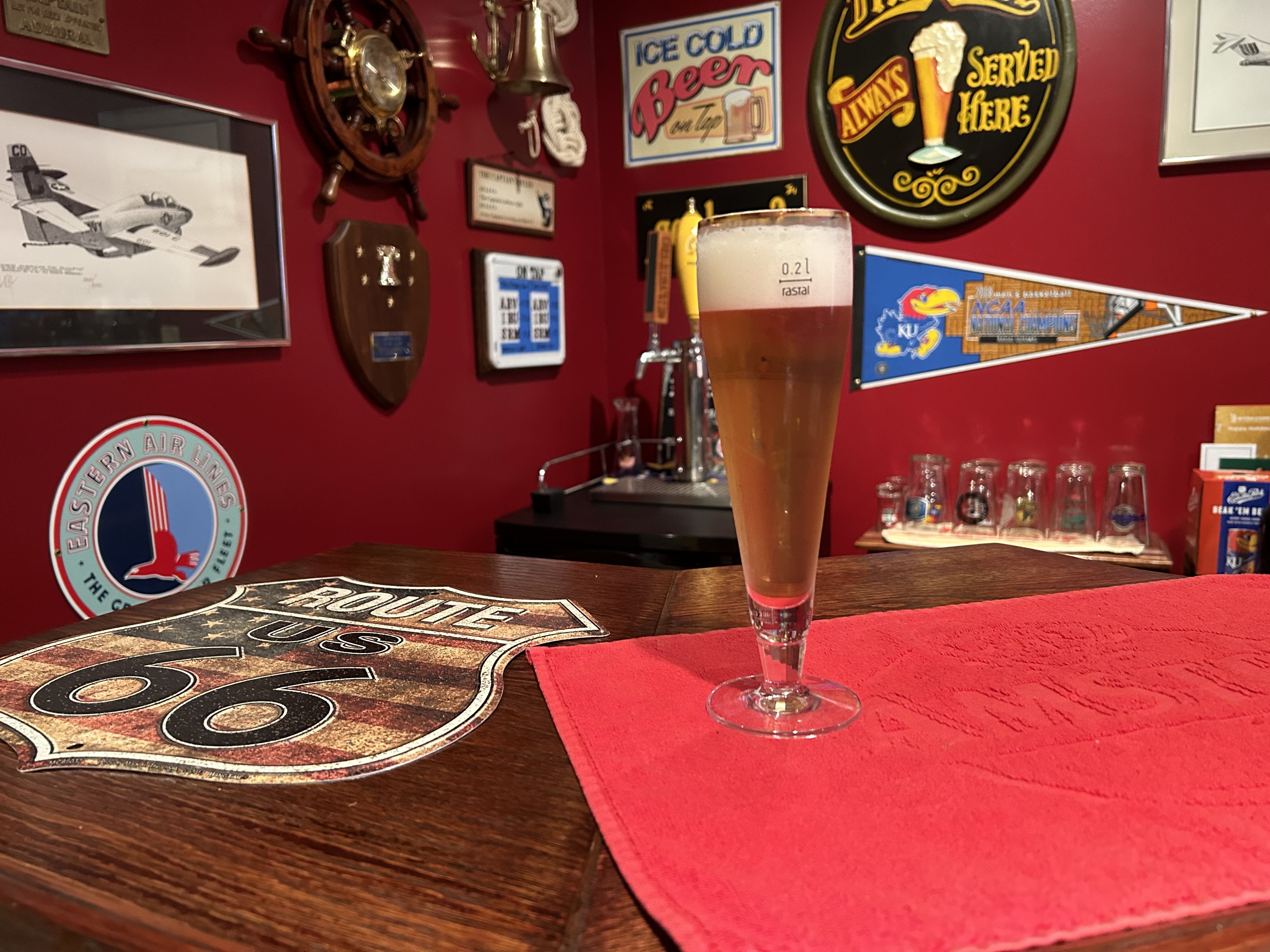All right, I've been slow to get back to this thread. I brought all 5 beers to my club for tasting, and had people fill out forms. Unfortunately, there were only 5 of us there that day, so it's not like I can present statistics that would mean anything. But here's a summary of the results.
Recipe and process:
45% Pilsner (Crisp Hana Heritage)
45% Vienna (Sugar Creek)
10% white wheat (Sugar Creek)
2:1 Saaz:Lubelski @ 60 and 5 minutes
1/2 pack dry yeast or full pack liquid yeast for ~1 gallon
Fermented 2 weeks at 60 F
OG 1.046, FG 1.008, 5.0% ABV
cold conditioned for ~2 months
The available "check all that apply" (CATA) descriptors were red apple, bubblegum, sulfur, green apple, clove, acid/sour, tropical fruit, pepper, neutral, banana, and alcohol.
Wyeast 2565
CATA: neutral (2), green apple, red apple, sulfur, pepper, banana, alcohol
Comments: hazy, bready, sulfur, grainy
In discussion, most of us agreed that this yeast brought malt flavors forward the most.
Omega Kolsch II
CATA: neutral (4), pepper (2), green apple, sour
Comments: bready, good German hop finish, mineral-y aroma, grainy flavor, boring
Wyeast 1007
CATA: neutral (4), red apple (3), pepper, tropical fruit, banana
Comments: not as bready, decent German hop finish, almost no aroma, very neutral flavor
Mangrove Jack M54
CATA: sulfur (4), red apple (2), green apple (2), neutral (2), pepper
Comments: flavor has slight sulfur taste in finish, clear, sulfur flavor,
Lallemand Köln
CATA: neutral (4), bubblegum, green apple, red apple, clove
Comments: honey, light diacetyl, grainy flavor, neutral flavor profile but strong aroma, don't pick up hop flavor
In discussion, many noticed some diacetyl (not me, I am blind)
Ranking as a
neutral ale yeast (4 points = best, 0 = worst, from each person)
Kolsch II (15)
1007 (13)
Koln (9)
2565 (7)
M54 (6)
Ranking
overall
2565 (12)
Kolsch II (10)
1007 (10)
M54 (10)
Koln (8)
Conclusions:
- While the above might suggest there were significant differences, everyone agreed that the four Kolsch yeasts produced very similar beers, with differences notable only because they were being tasted side-to-side.
- Everyone also agreed that M54 was an outlier, with notably different fermentation character (which some liked and some didn't.)
- 2565 left the beer noticeably hazy, even after 2 months cold. M54 was brilliant, distinctly clearer than the others.
- I was surprised to find that the Koln threw some diacetyl, as I'd never heard that criticism before, but (as mentioned) I am completely insensitive to it, so perhaps I wouldn't know.
- I happened to like M54 rather a bit, and will probably use it for hybrid beers such as California Common (no surprise, as this is how they brand it!) But the sulfur is notable even after extended cold conditioning, and it does not produce a typical Kolsch.















































![Craft A Brew - Safale BE-256 Yeast - Fermentis - Belgian Ale Dry Yeast - For Belgian & Strong Ales - Ingredients for Home Brewing - Beer Making Supplies - [3 Pack]](https://m.media-amazon.com/images/I/51bcKEwQmWL._SL500_.jpg)











